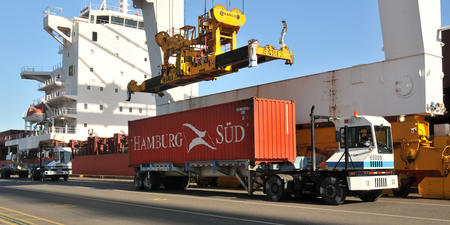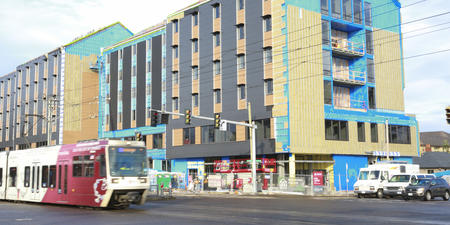Prosperity & Productivity
Report Home // Portland’s Story // East Multnomah County // Prosperity & Productivity // Opportunity & Affordability // Workforce & Investment Climate // Why This MattersThis category measures output and efficiency, income and traded-sector activity for all six peer regions.
OUTPUT & PRODUCTIVITY
Gross domestic product (GDP) has traditionally been the strongest economic indicator when comparing Portland to other region’s around the county. In 2017, Portland had the second highest real per capita GDP at $63,817. See Figure 6. Since 2010, however, per capita GDP has not grown and is the lowest of any of peer region. For comparison, Austin has grown the most at 26 percent since 2010. Since 2013, Portland’s per capita GDP has increased by almost 6 percent. The lack of comparable growth is due to a strong period of growth in 2010, fueled in part by Intel’s large construction and capital investment. From 2010 to 2013, per capital GDP decreased, but has grown in line with the U.S. economy since 2013. See Figure 7.
INCOME
Portland led in median household income (MHI) growth last year at 22.27 percent. See Figures 8 and 9. This growth indicates more equitable gains across low-, middle- and high-income households compared to per capita income, which is generally skewed by the top 1 percent of earners. Although per capita income does not capture the distribution of income, it is still an important measure of regional economic prosperity. For the first time since the depths of the recession, per capita income in the Portland region surpassed the U.S. metro average. See Figures 10 and 11.
TRADED SECTOR
The Portland region’s manufacturing sector as a share of total GDP continues to be the highest among peer regions, consistently placing at the top since 2010. However, the share of GDP continues to decrease as non-manufacturing GDP grows across the region, consistent with national trends and the strength of the U.S. dollar. See Figure 12.
When looking at the value of exports as a share of GDP across comparison regions, including both goods and services, the Portland region falls just behind Seattle in 2017 at 12.2 percent. All peer regions have experienced decreases in international exports as a share of GDP since 2012. See Figure 13.

Prosperity & Productivity

Opportunity & Affordability

Workforce & Investment Climate
